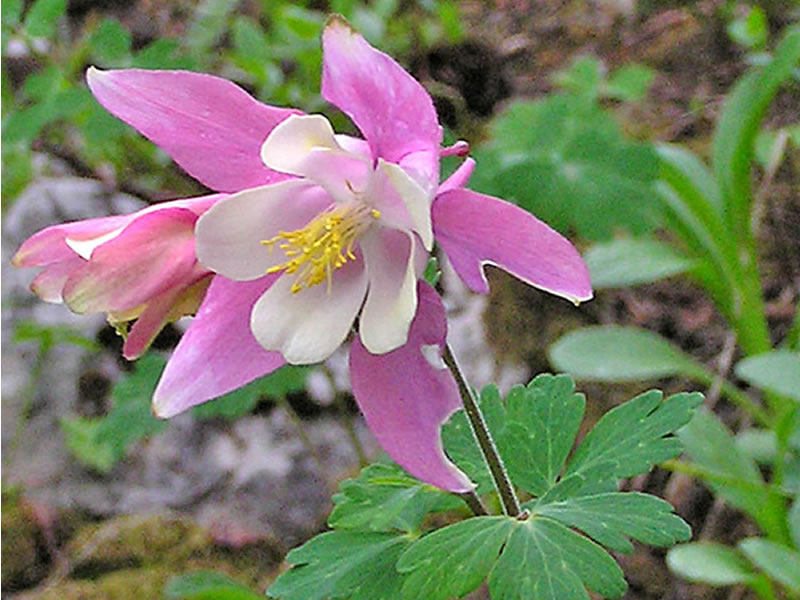Aquilegia Express: The Birds and Bees …hawk moths too!
Gardeners and horticulturists have known for many years that Aquilegia species can differ dramatically in flower color, size, and shape and have developed many cultivated varieties of columbines through hybridization and back crossing techniques.
 Acquilegia coerulea X Acquilegia elegantula. Photo by Al Schneider.
Acquilegia coerulea X Acquilegia elegantula. Photo by Al Schneider.
Very few genetic differences have been found among the many wild populations of columbines despite their floral and ecological diversity. The primary reason for this is that a number of geographic factors such as physical isolation and climatic barriers have been the dominant mechanism of speciation for columbines in western North America. Speciation that arises because of geographic barriers is known as allopatric speciation or geographic speciation. This geographic isolation has allowed various species of columbines to evolve in western North America. With time, these allopatric species could evolve enough differences, including specialization to different pollinators, where hybridization in the wild would be a rare occurrence or not occur at all.
In areas where populations of different species of columbines overlap or where reproductive isolation is not complete, interbreeding and hybridization is a common occurrence. The ease of hybridization in the wild is because these species of columbine are so similar at the DNA level and have only recently evolved from a common ancestor. This has led to columbines becoming the classic textbook example of “adaptive radiation,” where speciation has occurred rapidly to produce a variety of species.
Many wildflower enthusiasts and botanists have observed pollen-gathering bumblebees visiting various species of yellow, red, blue, and white flowered columbines where different species grow in close proximity. In the western United States, the red-flowered columbines are mainly pollinated by hummingbirds. However, on rare occasions hummingbirds have been observed gathering nectar from yellow and white flowered columbines which are generally pollinated by hawk moths.
However, the story gets a little more complex. Hybrids created by the cross pollination activities of bumblebees (and a few hummingbirds) set the stage for the next act in the development of variously colored columbines within an affected population. The main pollinator for a particular species of columbine then visits both the hybrid and the species in this population of columbines. This pollination activity results in the beginnings of a hybrid swarm. These hybrid zones provide a natural laboratory for the study of speciation. Over many years, interbreeding can result in a stable population that is a completely different color. Alpine meadows filled with columbines of an intermediate color have been observed throughout the western United States.











